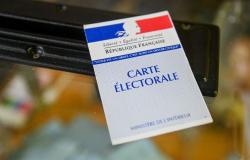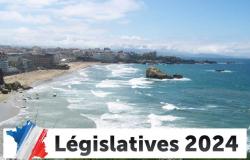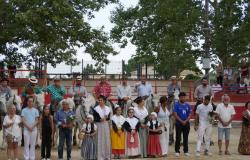Who are the young people voting for? Strongly mobilized during the first round of the legislative elections on Sunday, 18-24 year-olds mostly gave their votes to the left, even if the vote in favor of the RN increased, according to specialists interviewed by AFP.
In 2022, 30% of 18-24 year-olds turned out for the first round of the legislative elections, recalls Laurent Lardeux, sociologist and researcher at the National Institute for Youth and Popular Education (Injep).
“There, 57% of them made the trip, the difference is considerable”, proof that “when the political offer is simplified and the choices clear, the mobilization of young people can be strong”, he adds.
A growing mobilization, and a vote predominantly on the left. According to a survey published by Harris Interactive for Challenges, M6 and RTL, 41% of 18-24 year-olds slipped a ballot into the New Popular Front (NFP, left) on Sunday, 23% into the National Rally (RN, far right) – a sharp increase compared to 14.1% in 2022 – while 13% chose the presidential camp and 8% the Republicans (LR).
Another survey, conducted the day before the election by Ipsos Talan for France Télévisions, Radio France and Public Sénat, found that 48% of 18-24 year-olds voted for the NFP, 33% for the RN and its allies, far ahead of the Macronists (9%) and LR (4%).
“Young people aged 18-24 continue to vote first and foremost for the left, and secondly for the National Rally,” summarises Jean-Daniel Lévy, deputy director of Harris Interactive.
“We have a very marked bipolarization between a rather social ecological vote and a national conservative vote” and by a “tripartition” in the other age categories, adds Laurent Lardeux.
During the last European elections, first-time voters also voted more in favor of La France insoumise (LFI) than other age groups. The same was true during the 2022 legislative elections, where 18-24 year-olds voted 34.9% for Nupes in the first round – and 8.7% for the rest of the left -, 17.5% for the Macron camp and 14.1% for the RN.
– Two youths –
This polarization “refers to young people who are different in terms of their living conditions, their territory, their social origin, their level of education or their profession”, notes Laurent Lardeux, who co-directed the work “Disenchanted Generations? Youth and Democracy” (2021).
Young people voting for the RN tend to live in “peri-urban areas, have rather short, professional studies,” recalls Tristan Boursier, a researcher at Sciences Po Paris and a specialist in the far right. “I have the feeling that it is a more protest vote,” because they may have the feeling “of being left behind.”
In addition to the fact that the RN has become a “catch-all party”, now appealing to all social classes, it has benefited from the commitment of its executives, in particular Jordan Bardella, on social networks, from TikTok to Instagram, with videos that are not very program-oriented, showing him laughing with supporters or drinking wine at a fair, Mr. Boursier analyzes.
The RN also benefited from “politically engaged content” from the “fachosphere”, the far-right sphere of influence, whose videos sometimes exceed a million views.
– “Startle” –
Young people committed to the left vote more for a project: thus, “there is a convergence between ecological concerns and voting for the left for young people”, underlines Tristan Boursier.
“Seeing the left-wing parties come together and take up ecological issues feels good,” confirms Célia, 21, a waitress in Paris. “We don’t feel these values on the right. In the RN’s program, I don’t see that we’re trying to save the planet.”
For Jean-Daniel Lévy, “the themes addressed by the NFP around purchasing power” were also “rather positively received” by young people.
Not to mention “the dramatization of the issue” which has resulted in the “surge in mobilization” in recent days, he adds. “We are not dealing with young people who are as depoliticized as one might think: when there is an element on which their vote can have an impact, they are ready to move.”
“Shocked” by the results of the European elections, Loic, a 19-year-old arts student, admits that it was above all “collective enthusiasm” that pushed him to go and vote for the first time on Sunday. With the sole objective of “blocking the RN”.





